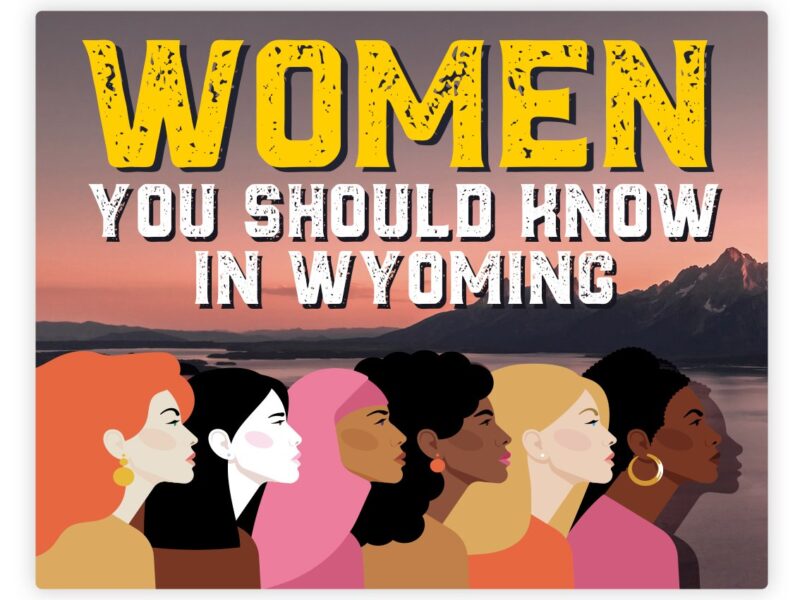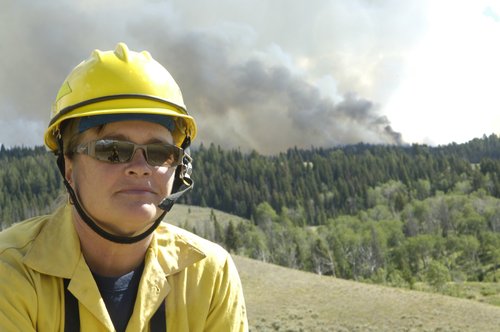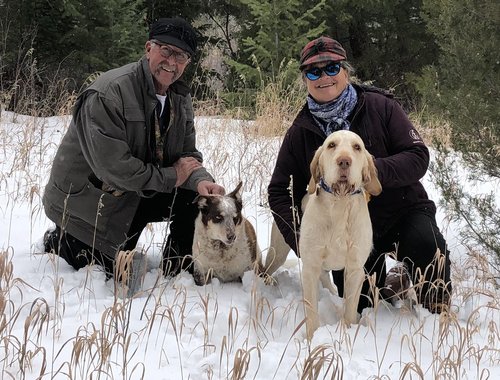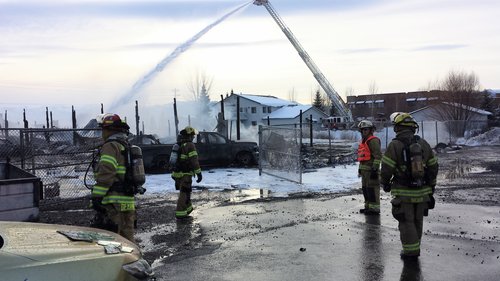WOMEN YOU SHOULD KNOW IN WYOMING: Teton County’s First Female Fire Marshal
In an industry overwhelmingly dominated by men, Kathy Clay blazed a trail all her own
- Published In: Other News & Features
- Last Updated: Apr 12, 2023

By Melissa Thomasma
Special to the Wyoming Truth
This story was updated to correct a job title as of 10:15 MT on April 12, 2023.
The fire station in Hoback is barely large enough to house half a dozen emergency vehicles, and responding volunteers must squeeze their way between bumpers to reach the small meeting room in the back.

It’s here where Kathy Clay’s fire service story began. In 2002, encouraged by her now- husband, Michael Trumbower, she signed up as the fire department’s first woman volunteer. Four years later, when the organization’s fire inspector took maternity leave, Clay stepped in, leaving behind the mantle of volunteer for a paid career in the fire service—a profession where women make up only 5%, according to FEMA.
“9/11 was my inspiration,” she said. “I recall President Bush saying that Americans needed to volunteer more. I had been giving blood, but that didn’t seem like enough.”
Tenacious commitment
Born and raised on a farm near Ottawa, Illinois, Clay came to Wyoming on the heels of a divorce in 1994. Moving west felt right, and she trusted that she’d build a new and rewarding life. And Clay did just that, working as a hunting camp chef, snowmobile guide and seamstress for outfitters who led hunting and fishing trips into the wilderness.
But it was in fire service that Clay found her calling. Clay’s time in Wyoming’s wildest places in all seasons and conditions forged not only her physical strength, but also reinforced her tenacity and steadfast will—characteristics that paved the road to achievement in her new career.
Clay climbed the ladder from fire inspector to battalion chief with the Jackson Hole Fire/EMS. Alongside the department chief and four other battalion chiefs, she led teams of paid firefighters and dozens of volunteers. On any given day, Clay could respond to a car accident, medical crisis or swiftwater river rescue, among other emergencies.
All members of an all-hazards fire department like Jackson Hole Fire/EMS must perform an array of physically challenging tasks—from raising ladders and hoses to carrying an injured comrade to safety, wielding 50-pound pneumatic tools like the Jaws of Life and using shovels to carve firebreaks into the land to stop an advancing wildfire.
“To maintain my fitness, I walked, was part of an exercise class, did some bike spinning,” Clay said. “The physical elements of the job certainly challenged me, and as I grew older, becoming a battalion chief allowed me to use my brain more in that operational aspect.”
In 2011, Clay was appointed Teton County’s Fire Marshal—the first woman in Wyoming to hold the position and one she relished through her retirement at age 63 last May. In this role, she investigated fires to determine the cause of the blaze, puzzling out whether a failure or deliberate act was to blame for cases across the immediate region. Her findings impacted the aftermath of such events — from insurance payouts to criminal charges. Between incidents, Clay conducted fire inspections of new construction and renovations, as well as reviewed building plans for fire code compliance across Teton County.

Clay’s career-defining event was the November 2014 explosion of the AmeriGas Propane station in Jackson Hole—one of the largest in the county. She was the incident commander that day and the first on scene. The station was adjacent to a large grocery store, so Clay was almost certain that the explosion had caused countless injuries or fatalities.
“Our crews were able to get water on the overheated [liquid propane] truck’s tank, saving an event that had all the potential to be a catastrophic explosion,” she recalled. “Many people in the emergency service world worked hard, had some significant challenges, and at the end of the day, there were no major injuries.”
Clay is equally proud of her safety efforts that prevented more deaths and disasters than anyone knows. With her team of career professionals and volunteers, she educated the Jackson community about the dangers of carbon monoxide and distributed CO2 alarms to residents through a $10,000 grant from the Community Foundation of Jackson Hole.
Additionally, Clay championed the removal of shake shingles as an approved form of roofing material on homes located near areas vulnerable to wildfire. “We can’t know for sure how many incidents were averted,” she said, “but even if it was just one, that’s enough.”
Still, Clay wishes she had been able to expand the mandate for residential fire sprinklers in Teton County.
“The current edition of the International Residential Code requires all residential homes to be fire sprinklered, but Teton County has kept with an outdated rule and not required them,” she said.
Most pushback from elected officials is rooted in concerns about installation costs and the potential for pipes to freeze during Wyoming’s winters, though she said proper installation makes this a non-issue.

“I really, truly believe that if people knew how protective fire sprinklers were in their homes, they would put their hands up in the air and scream that this county doesn’t
mandate fire sprinklers in everybody’s house,” Clay said.
A true trailblazer
Brady Hansen, chief of Jackson Hole Fire/EMS at the time of Clay’s retirement, praised her commitment to reducing fire risk and called her one of the “most accomplished” fire marshals he worked with across his career.
“It’s not what [Clay] did for a living, it’s who she is as a person,” Hansen said. “ . . . She set an example to everyone that women in fire [service] can and should succeed in every way. She set the bar very high for anyone trying to follow after her.”
Looking back, Clay said her ascent to fire marshal demanded an extra dose of grit because of her gender. She is quick to admit that piping up with an idea or opinion that goes against the crowd can be intimidating, but she found it was often worth the risk.
“That was kind of my signature,” she said, noting that diversity around the table leads to better solutions and decision making. “I recognized it, and it didn’t stop me. I had courage to say the hard things that a group of the opposite sex really didn’t want to hear.”
Clay hopes more women enter the fire service, but acknowledged it’s still an uphill climb in the male-dominated industry, in part because of the physical endurance required for the job.
“You need to have the physical endurance and the ability to do what the guys are doing because you’re going to be judged — it’s just a fact of being in a group. If you know you’re tough and you’re thinking about it, do it.”
In retirement, Clay remains committed to advancing public safety. In addition to serving on the board of the Fire & Life Safety Section in the International Association of Fire Chiefs, Clay is a member of the UL Fire Safety Institute Public Education; the Vision 20/20 Advisory Board representing International Association of Wildland Fire; and the International Code Council (ICC) that reviews International Wildland Urban Interface Code. She continues to be a car seat installation instructor for Safe Kids.
“I loved my job,” Clay said. “To be able to educate people to live safer lives was an enormous super power!”













